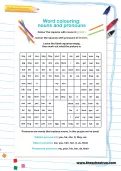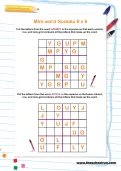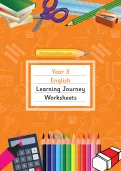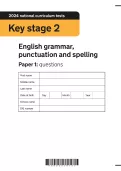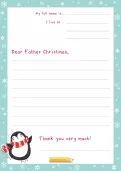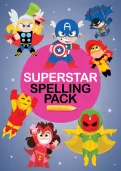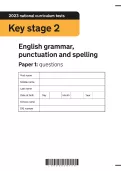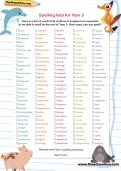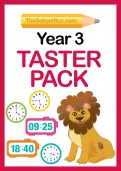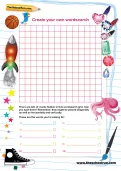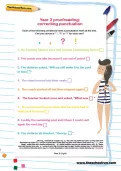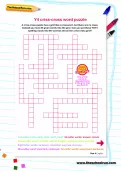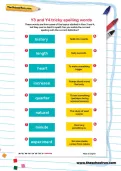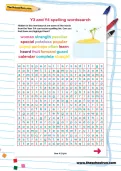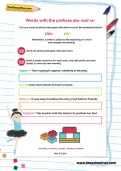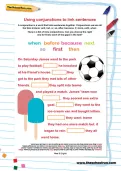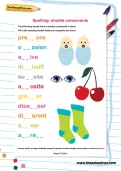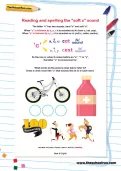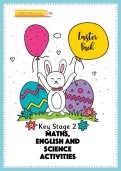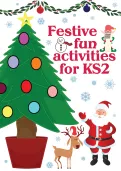TheSchoolRun's Learning Journey, compiled by Primary School teachers, includes individual programmes for every year of primary school in English and maths.
Each programme comprises 40 worksheets that cover all the core skills that your child will have been taught during the school year.
This instantly downloadable pack includes all 40 worksheets in the Year 3 English programme.
or
Register to add to your saved resources
Already a subscriber? to view this content.
Help your child prepare for the Year 6 English SATs, taken at the end of Key Stage 2, with some revision and at-home practice. These KS2 SATs past papers from 2024 are the official past papers from the Department for Education, used in schools.
or
Register to add to your saved resources
Use your KS2 child's Christmas letter to Father Christmas as a fun opportunity to practise handwriting. The layout has been done for them, now all they need to do is write their Christmas list, name and address and pop it in the post (find Santa's address on the Royal Mail website!). This is a great activity to help children consider how to form letters correctly and there's plenty of space to include wished-for items. Writing this letter will also help them understand that letters have a purpose and a particular audience.
or
Register to add to your saved resources
Are you a Spelling Superstar? Test your abilities with this fun and challenging spelling pack. Practise high-frequency words, coding short and long vowels, contractions and homophones with these games and activities created by teacher and mum, Clare Winstanley.
Take your spelling to the next level, impress your classmates and boost your confidence with Superstar Spelling.
or
Register to add to your saved resources
Already a subscriber? to view this content.
Help your child prepare for the Year 6 English SATs, taken at the end of Key Stage 2, with some revision and at-home practice. These KS2 SATs past papers from 2023 are the official past papers from the Department for Education, used in schools.
or
Register to add to your saved resources
Help your child excel in spelling with this handy collection of Year 3 spelling words created by an experienced teacher.
or
Register to add to your saved resources
Find out what your child will learn in Year 3 English, maths and science, try out a few learning activities and read our top tips about how to support their learning and development in our free, downloadable Year 3 Taster Pack.
or
Register to add to your saved resources
Looking for a fun way to practise this week's spellings, or consolidate some new vocabulary? Use our blank printable wordsearch grid to create your own puzzle for your KS2 child (and you can print it out as many times as you need to!).
or
Register to add to your saved resources
Already a subscriber? to view this content.
Challenging reading comprehensions and activities for Year 3 readers and writers, designed to stretch your child and offer them the opportunity to explore their year-group topics in greater depth.
or
Register to add to your saved resources
Already a subscriber? to view this content.
Each of the following sentences need a punctuation mark at the end. Can you choose a “.”, “?” or “!” for each one?
or
Register to add to your saved resources
Already a subscriber? to view this content.
A criss-cross puzzle has a grid like a crossword, but there are no clues. Instead you must fit given words into the grid. Can you put these Y3/Y4 spelling words into the correct slot on the criss-cross grid?
or
Register to add to your saved resources
In these sentences, look for the words with a spilt digraph. Remember, you are looking for a word with an ‘e’ at the end that changes a short vowel sound into a long vowel sound (for example, mad becomes made).
or
Register to add to your saved resources
Already a subscriber? to view this content.
These words are from some of the topics studied in Year 3 and 4, but they can be hard to spell! Can you match the correct spelling with the correct definition?
or
Register to add to your saved resources
Already a subscriber? to view this content.
Hidden in this wordsearch are some of the words from the Year 3/4 curriculum spelling list. Can you find them and highlight them?
or
Register to add to your saved resources
Already a subscriber? to view this content.
Work out which prefix goes with each word. Then write a similar sentence for each word, once the prefix has been added, to show its new meaning.
or
Register to add to your saved resources
Already a subscriber? to view this content.
A conjunction is a word that links sentences together. Conjunctions we use all the time include: and, but, or, so, after, because, if, since, until, when. Here is a list of time conjunctions. Can you choose the right one to fit into each of the gaps in the text?
or
Register to add to your saved resources
Already a subscriber? to view this content.
These words have a double consonant in them. Fill in the missing double letters to complete the word.
or
Register to add to your saved resources
Already a subscriber? to view this content.
What words do the picture clues below refer to? Draw a circle round the “c” that sounds like an /s/ in each word.
or
Register to add to your saved resources
Already a subscriber? to view this content.
Get ready for some egg-y, chocolate-y, Easter-y fun! The KS2 Easter activities pack has plenty of themed maths, English and science learning opportunities to keep kids busy and learning over the spring break.
or
Register to add to your saved resources
Already a subscriber? to view this content.
With Christmas lists to write, present-delivery schedules to work out, Grotto problems to solve and light and dark experiments to try this bumper pack of festive learning activities will keep your child engaged over the Christmas break.
or
Register to add to your saved resources
Already a subscriber? to view this content.

